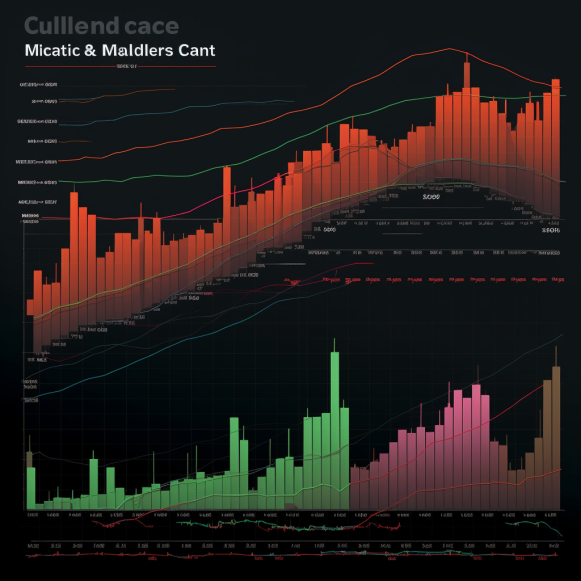Politicians love to cite crime data. It’s often wrong

When Florida Republican Gov. Ron DeSantis announced his presidential campaign in May, he boasted to the nation that the state’s crime rate in 2021 would be at a 50-year low.
But DeSantis couldn’t say for certain.
This is because only about one out of every ten law enforcement agencies in his state had reported their crime statistics to the FBI. In fact, the data used by the Florida Department of Law Enforcement in its 2021 statewide crime report left out more than 40% of the Sunshine State’s population.
In May, Democratic Mayor Brandon Whipple of Wichita, Kansas, claimed that violent crime had dropped by half during his tenure. Whipple’s source, the FBI’s Crime Data Explorer, however, missed half of the violent crimes recorded by the Wichita Police Department, possibly due to the agency’s inability to integrate its system with the FBI’s newly revamped system.
According to a new Stateline analysis of the FBI’s Uniform Crime Reporting program participation data, law enforcement agencies’ inability — or refusal — to send their annual crime data to the FBI has resulted in a distorted picture of crime trends in the United States.
“Policymakers are making decisions based on completely incomplete data.” Political elections are being decided based on feelings rather than facts. “It’s a mess,” said Jeff Asher, a data analyst and co-founder of the data consulting firm AH Datalytics.
Experts warn that some policymakers, whether knowingly or unknowingly, use flawed statistics to tout promising crime trends, potentially misinforming voters. Inaccurate data can also have an impact on efforts to improve public safety and criminal justice, potentially leading policymakers to overlook real community issues.
“The problem for voters is that they don’t have very good information about what levels of safety actually are,” said Anna Harvey, a New York University professor of politics, data science, and law. Harvey is also the director of the Public Safety Lab at the university and the president of the Social Science Research Council.
“They’re a little bit vulnerable to politicians who are kind of throwing around allegations and claims about crime that may or may not be accurate,” according to her.
DeSantis faced criticism for repeating the incomplete numbers, and NBC News this summer reported that law enforcement rank-and-file had warned that the statistics weren’t correct.
To NBC News, the Florida Department of Law Enforcement defended the figures, saying that “criticism about FDLE’s robust data collection methods is unfounded.”
The FBI’s transition to a new system
When the FBI first released its 2021 national crime data a year ago, there wasn’t enough information to tell whether crime increased, decreased, or remained constant. The FBI had estimated results for areas that refused or were unable to submit data.
This is due in part to the FBI implementing a new reporting system. The National Incident-Based Reporting System, or NIBRS, gathered more detail on individual incidents, but it also required training and technological upgrades from state and local law enforcement agencies.
The national law enforcement reporting rate fell below 70% in 2021 for the first time in two decades, owing primarily to the FBI’s transition. Many law enforcement agencies across the country were not NIBRS-certified in time for the 2021 crime data submission in 2022, contributing to lower reporting rates.
There was a reporting gap across the country even before the new system went live. Prior to 2021, on average, 23% of U.S. law enforcement agencies did not report any crime data to the FBI. In 2020, 24% of agencies did not report, and by 2021, the figure had risen to 40%.
Inconsistent reporting not only makes it difficult to compare trends over time and across states, but it also adds uncertainty to discussions about crime, according to Ames Grawert, senior counsel for the Brennan Center for Justice’s justice program. The Brennan Center is a law and policy think tank on the left.
“Issues like that are invariably going to lead to some people having a misunderstanding of crime data — makes it harder to talk about crime in some states, especially given the low participation rate in Florida, for example,” Grawert told Stateline in a phone interview.
The FBI’s most recent crime report, released earlier this month, offers a glimmer of hope for greater transparency: 71 percent of law enforcement agencies nationwide submitted data through NIBRS or the FBI’s previous reporting system, an increase of 11 percentage points from the previous year. This year, approximately 60% of participating law enforcement agencies submitted their data solely through NIBRS. This year, the FBI accepted data from both NIBRS and the older system, a departure from last year’s NIBRS-only approach.
According to preliminary data, violent crime in the United States decreased last year, returning to pre-pandemic levels, while property crime increased significantly.
While reporting crime data to the FBI is optional, some states, such as Illinois and Minnesota, have laws requiring local law enforcement to report crime data to state law enforcement. State law enforcement agencies frequently serve as clearinghouses for local crime data, and in some states, they are in charge of sharing this information with federal authorities. Some local law enforcement agencies may also send data directly to the FBI.
However, some states lag behind.
Florida, Illinois, Louisiana, and West Virginia, for example, all remain below the 50% reporting threshold, implying that fewer than half of their police departments submitted 2022 crime data to the FBI. Despite these reporting rates, the data show that larger proportions of these states’ populations were represented in the data from last year than in 2021.
Florida has had the lowest reporting rate for the past two years in a row, with 6% in 2021 and 44% in 2022, owing in part to the state’s ongoing transition to NIBRS. According to the Florida Department of Law Enforcement’s Public Information Office, the FBI did not accept Florida’s data through the previous data collection system for 2021, which would have represented approximately 58% of the state’s population.
“It’s a problem in both red and blue states, and it’s also a local issue,” Kylie Murdock, a policy adviser with Third Way, a left-leaning national think tank, told Stateline in an interview.
“When people use this data to back up tough-on-crime approaches, and say, ‘Our approach in this state is working’ — when in reality, that’s not necessarily the truth because you don’t know the full scope of the problem,” Mr. Murdock said.
According to a Stateline analysis, roughly a quarter of the U.S. population was not represented in the 2022 federal crime data. Over 6,000 of the 22,116 law enforcement agencies failed to submit data.
In 2021, major police departments, including those in major cities like Los Angeles and New York, did not submit any data. The NYPD stated that it would be unable to submit summary statistics in 2021 due to a change in FBI requirements, but it was NIBRS-certified this year. In 2022, both cities’ departments submitted summary data to the FBI using the old reporting system.
According to the FBI’s 2021 agency participation data, the ten states with the lowest reporting rates included a balanced mix of blue and red states, whereas last year’s data showed more red states among the ten states with the lowest reporting rates.
Political and social ramifications
The gaps in the FBI’s crime data make it difficult for researchers and policymakers to make sense of crime trends. As elections approach and crime reclaims the spotlight, these issues become more pressing.
According to a Pew Research Center survey conducted during last year’s congressional elections, 61% of registered voters said violent crime would be very important when deciding who to vote for.
While the overall violent crime rate has steadily declined over the last 20 years on average, the Pew Research Center suggested that voters may be reacting to specific types of violent crime, such as homicide, which increased by 30% between 2019 and 2020 — one of the largest year-over-year increases on record.
According to Harvey, a New York University professor, a lack of accurate, real-time crime data leaves voters vulnerable to political manipulation.
“Voters don’t usually have that kind of access.” Politicians then try to capitalize on voters’ concerns about crime, but without providing them with information that is actually useful to them,” Harvey explained.
Experts predict that the problem of incomplete national crime data — and the resulting incomplete picture — will persist for years because many law enforcement agencies are still working to implement the new reporting system.
This could have an impact on how policymakers allocate funds for law enforcement, crime prevention, and other public safety initiatives. When describing trends in crime data, Ernesto Lopez, a research specialist for the Council on Criminal Justice, a nonpartisan research think tank, advises avoiding narrow timeframes and knowing what types of crimes are included.
“Relying on FBI data, which is frequently outdated, often allows politicians to sensationalize a few news stories.” It may not be accurate without more recent data,” Lopez told Stateline.
“Politician or otherwise, when we talk about crime, it’s really important to have a larger context.”
Government Assistance
Since the FBI announced the switch to its new NIBRS reporting system in 2015, law enforcement agencies across the country have received more than $180 million in federal funding to assist with the transition. Many police departments are still working to fully transition to the new system.
According to Jim Craft, executive director of the Louisiana Commission on Law Enforcement, agencies serving some of the state’s most populous cities, including Lafayette, New Orleans, and Shreveport, did not report any data to the FBI last year because they were implementing new records management systems.
Craft wrote in an email that Louisiana’s low reporting rate could be due to smaller law enforcement agencies reporting crime statistics through their local sheriff’s office, giving the impression that fewer agencies are reporting.
According to Paul Perrone, the director of the Hawaii Uniform Crime Reporting program, the police departments serving Maui and Hawaii counties were not certified in time to submit data to the FBI via NIBRS last year. Perrone wrote in an email that Hawaii recently became one of the few states where all law enforcement agencies are NIBRS-certified.
Meanwhile, experts warn that, even as more law enforcement agencies submit data in the coming years, the FBI’s database only accounts for crimes reported to police. Furthermore, according to the federal Bureau of Justice Statistics, more than half of violent crimes and roughly 70% of property crimes go unreported.
States Newsroom, a national nonprofit news organization focused on state policy, owns Stateline.






